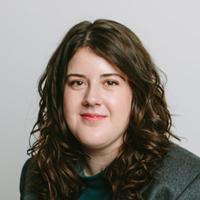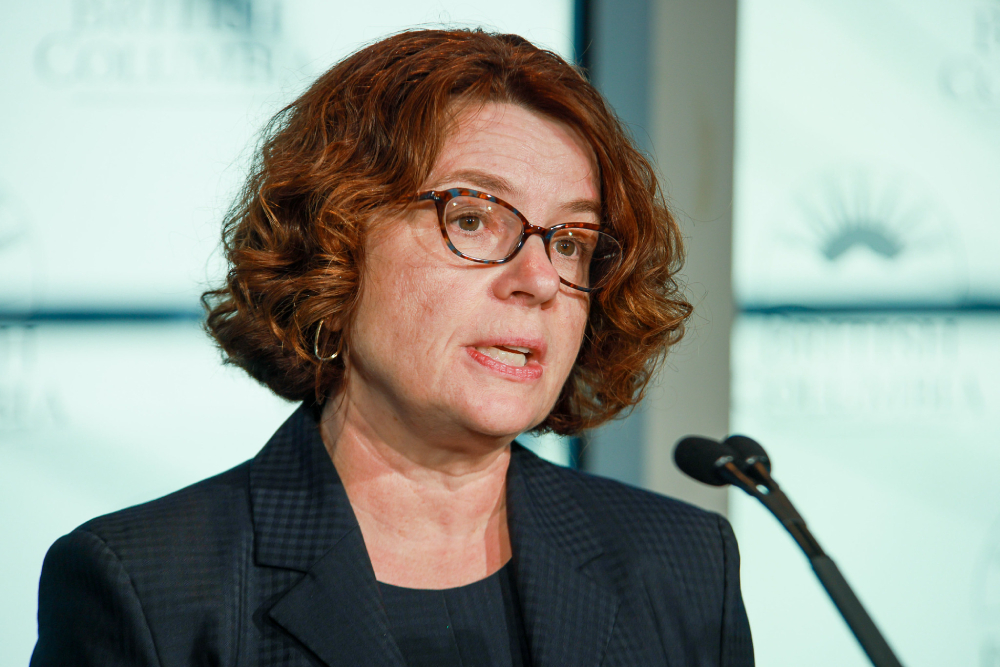B.C.’s upward trend in COVID-19 cases continued over the weekend as public health officials announced 236 new cases of COVID-19 since Friday, an average of 79 new transmissions each day.
There were 100 new cases between Friday and Saturday — the province’s second-highest single-day jump — 88 between Saturday and Sunday and 48 from Sunday to Monday.
There are now 743 active cases, the highest number since the pandemic began. Hospitalizations dropped from 12 to four over the weekend, with three people in critical care.
Deputy provincial health officer Dr. Réka Gustafson said people need to be alert for any symptoms and follow measures to slow the spread of COVID-19. “We all know what we need to do to protect ourselves and each other, and this is the time for us to use all the layers of protection.”
The August surge in cases shows little sign of slowing just three weeks before students, teachers and staff are expected to return to classrooms.
Public health and education officials are still backing a return to class.
But the rising number of cases appears to have led to further actions to keep students and staff safe.
Shortly before Gustafson’s presentation on Monday afternoon, the Education Ministry announced it will require middle school and secondary students, as well as teachers and staff, to wear non-medical masks in high-traffic areas like buses and hallways when distance cannot be maintained.
The change comes after an announcement earlier this month of $45.6 million in funding for provide more hand-washing stations, cleaning and other safety measures in B.C. classrooms.
Gustafson noted that “transmission from children to adults is uncommon.” Masks are still less effective at slowing transmission than distancing and staying home when sick, she noted.
So far 2,676 children from four to 11 have tested positive for COVID-19 in Canada and they make up just one per cent of hospitalizations and critical care cases, according to the Public Health Agency of Canada.
“As schools reopen there needs to be close monitoring of cases and transmission patterns in children in different age groups,” said an agency spokesperson in an email.
But for teachers who are immunocompromised or caring for elderly relatives, rising cases and community transmission mean personal and professional anxieties are mounting as the summer winds down.
Mary Peters, 53, said Monday that each new daily case count “brings up a sadness.”
Peters teaches English and psychology at Killarney Secondary School in Vancouver and also cares for her elderly mother, who moved to Vancouver from Kamloops during the pandemic’s first peak in spring.
“I’m her sole support here for now, because all of a sudden she could not create a new friendship circle in Vancouver,” said Peters, who herself is immunocompromised due to her rheumatoid arthritis. “As I move back into my professional life, I feel like I’ll need to be limiting the other elements in my life to protect myself and my family.”
The recent surge has mostly been driven by social outings among people in their 20s and 30s, an age group Peters said is not dissimilar from the Grade 12 students she will be teaching daily.
Many of her students work part-time customer service jobs or socialize with older siblings who may be visiting bars and restaurants where recent exposure events have occurred.
And her classroom, which normally holds about 28 students, can only accommodate eight to 12 with proper social distancing.
“By being a teacher and at school, I have to be responsible for my bubble,” said Peters, noting she has no control over what students or their families do outside the classroom. “It’s very limiting.”
Peters also fears a delay between a sharp spike in cases and any decision to move back to online teaching and the risks it could pose to herself and her students.
Peters said that while teaching remotely would be safer for her, she recognizes the value of being physically present for students.
Elise Valez shares Peters’ concerns as she gets her six-year-old, Milo, ready to start Grade 1 in a Saanich public elementary school next month.
Even though she feels safe sending him back right now — “I trust public health” — she and her partner are trying to communicate to Milo that going back online is a possibility, another uncertainty alongside all the normal back-to-school anxieties.
“How do we prepare our kids for that uncertainty?” she asked.
Valez said that after schools closed in March, there was little home instruction for Milo. She worked full time from home and cared for her two-year-old, Lucia, while her partner worked out of the home in construction, leaving little time.
She doesn’t want to see her extroverted son deprived of the interaction and connection he needs.
But Valez worries for vulnerable students and how they will fare as teachers keep their physical distance and crowded classrooms make distancing difficult, if not impossible.
And her biggest fear is that if public schools appear to be unsafe, parents who can afford to will pay tutors or opt for private schools for their children, eroding public education and reducing government funding, which is based on the number of students in a school.
“I would have liked to hear that we’re going to spend what it takes to see all our kids access the same level of education no matter what their parents do, no matter what they make,” said Valez. Austerity in education spending during the recent BC Liberal government left many schools short of resources before the pandemic, she said.
Milo’s school has two portable classrooms and is already “bursting at the seams,” Valez said. “Our public education is not in a resilient, robust, strong place to deal with this.”
“We really need to strengthen public education, now more than ever.” ![]()
Read more: Health, Education, Coronavirus
















Tyee Commenting Guidelines
Comments that violate guidelines risk being deleted, and violations may result in a temporary or permanent user ban. Maintain the spirit of good conversation to stay in the discussion.
*Please note The Tyee is not a forum for spreading misinformation about COVID-19, denying its existence or minimizing its risk to public health.
Do:
Do not: